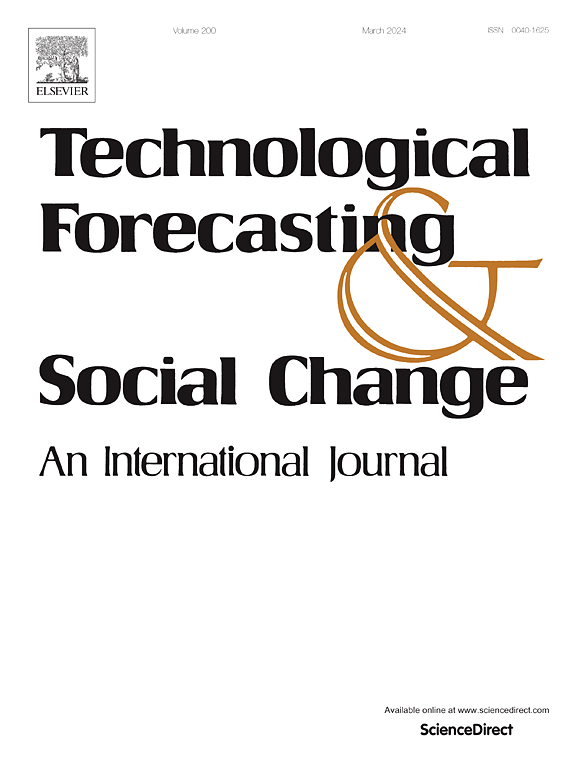A maturity model for assessing the implementation of Industry 5.0 in manufacturing SMEs: learning from theory and practice
IF 12.9
1区 管理学
Q1 BUSINESS
Technological Forecasting and Social Change
Pub Date : 2025-02-24
DOI:10.1016/j.techfore.2025.124045
引用次数: 0
Abstract
Digitalization is facing the transition from Industry 4.0 to Industry 5.0, enlarging the technocentric vision of technologies to embrace sustainable, resilience and human-centered design objectives. Although aware of the benefits of digitalization, many companies have not yet undertaken this process or are only at the beginning stages, seeking support and expertise. Firstly, it is important to understand the company's current technological level and, therefore, establish an improvement strategy. Over time, several authors have made efforts to develop maturity models capable of assessing a company's Industry 4.0 technological level. However, given the recent shift toward Industry 5.0, it is necessary to understand how such tools can effectively address the three pillars of Industry 5.0 when evaluating digital maturity. This study contributes to the literature on Industry 5.0 by proposing a tool to assess the maturity of companies in Industry 5.0 practices, focusing on sustainability, resilience and human centricity in manufacturing processes. This Industry 5.0 Maturity Model consists of a self-assessment questionnaire, designed to assess the current maturity level of the company across seven maturity dimensions (double assessment Industry 5.0 integrated and pillar-based), and a roadmap that outlines improvement strategies and operational information to enhance the company’ maturity across these dimensions. The proposed maturity model is applied in a multiple case study to collect empirical evidence from four Italian SMEs operating in the manufacturing industry. The results show a good Industry 5.0 maturity, with differences across the various dimensions influenced by the characteristics of the analyzed sectors and products. The low level of embedded technologies leaves room for future improvements in products and services, aligned with sustainability, resilience and human-centric perspectives. Theoretical and practical implications of the study are also discussed.
制造业中小企业实施工业5.0的成熟度模型:理论与实践的学习
数字化正面临着从工业4.0到工业5.0的转变,扩大了以技术为中心的愿景,以拥抱可持续、弹性和以人为本的设计目标。虽然意识到数字化的好处,但许多公司还没有开始这个过程,或者只是在开始阶段,寻求支持和专业知识。首先,重要的是要了解公司目前的技术水平,因此,建立一个改进策略。随着时间的推移,一些作者努力开发能够评估公司工业4.0技术水平的成熟度模型。然而,考虑到最近向工业5.0的转变,在评估数字成熟度时,有必要了解这些工具如何有效地解决工业5.0的三大支柱。本研究通过提出一种工具来评估企业在工业5.0实践中的成熟度,从而为工业5.0的文献做出了贡献,该工具侧重于制造过程中的可持续性、弹性和以人为本。该Industry 5.0成熟度模型包括一份自我评估问卷,旨在评估公司在七个成熟度维度上的当前成熟度水平(工业5.0集成和基于支柱的双重评估),以及一个概述改进策略和运营信息的路线图,以提高公司在这些维度上的成熟度。本文将提出的成熟度模型应用于一个多案例研究,以收集四家意大利制造业中小企业的经验证据。结果显示,工业5.0成熟度良好,但受所分析行业和产品特征的影响,各维度之间存在差异。嵌入式技术的低水平为产品和服务的未来改进留下了空间,与可持续性、弹性和以人为本的观点保持一致。本文还讨论了本研究的理论和实践意义。
本文章由计算机程序翻译,如有差异,请以英文原文为准。
求助全文
约1分钟内获得全文
求助全文
来源期刊
CiteScore
21.30
自引率
10.80%
发文量
813
期刊介绍:
Technological Forecasting and Social Change is a prominent platform for individuals engaged in the methodology and application of technological forecasting and future studies as planning tools, exploring the interconnectedness of social, environmental, and technological factors.
In addition to serving as a key forum for these discussions, we offer numerous benefits for authors, including complimentary PDFs, a generous copyright policy, exclusive discounts on Elsevier publications, and more.

 求助内容:
求助内容: 应助结果提醒方式:
应助结果提醒方式:


